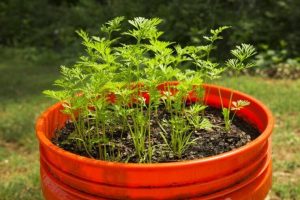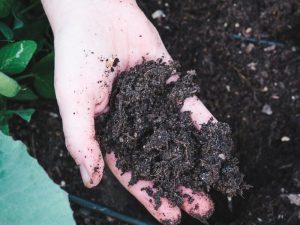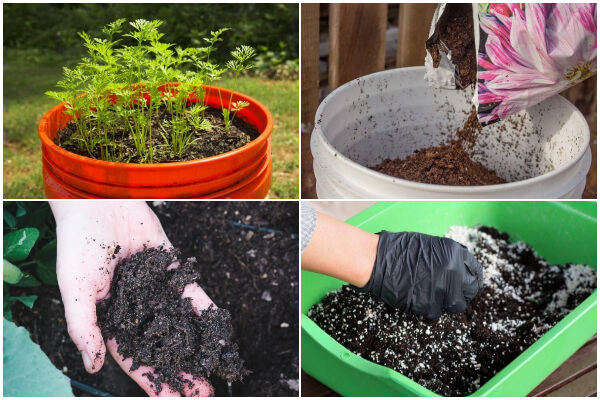Growing carrots in containers is a fantastic way to cultivate fresh produce, even if you lack a traditional garden space. This method is ideal for urban gardeners, beginners, or anyone looking to enjoy the convenience of homegrown carrots without the challenges of dealing with garden soil. With the right steps and some attention to detail, you can harvest crisp, sweet carrots straight from your patio, balcony, or windowsill.
It allows you to control the soil quality, avoid pests commonly found in ground gardens, and optimize growing conditions for these root vegetables. Containers are portable, so you can position them to receive maximum sunlight or protect them from harsh weather. Additionally, container gardening minimizes the risk of soil-borne diseases and makes harvesting more straightforward.
Selecting the Right Container

Carrots are root vegetables that require adequate depth to develop properly.
- Deep: At least 12 inches deep, though some longer varieties may need 14-18 inches.
- Wide: Choose a container that offers enough space for multiple plants to grow. A 5-gallon bucket or a rectangular planter works well.
- Drainage: Ensure the container has drainage holes to prevent waterlogging, which can cause root rot and poor growth.
For added convenience, consider lightweight or portable containers so you can move them around as needed to capture sunlight or avoid frost.
Choosing the Right Variety
Not all carrot varieties are suitable for container gardening. Opt for shorter, stump-rooted, or round types that thrive in shallow or limited spaces.
- ‘Paris Market’: A small, round carrot ideal for containers and early harvesting.
- ‘Thumbelina’ or ‘Oxheart’: Compact and deliciously sweet varieties that do well in limited soil depth.
- ‘Chantenay’: Known for its shorter, conical roots and tolerance to various soil conditions.
For those wanting a challenge, long-rooted varieties like ‘Imperator’ can also grow in deep containers, provided the soil is loose enough for the roots to penetrate.
Preparing the Soil
Carrots thrive in loose, well-draining soil free of rocks, clumps, or debris that can cause roots to split or grow misshapen. Before planting, pre-moisten the soil to ensure it’s evenly damp but not soggy.

- Use a quality potting mix: Avoid garden soil, which is often too dense for containers. Look for a mix labeled for vegetables.
- Add organic matter: Mix in compost or aged manure to enrich the soil with nutrients and improve drainage.
- Avoid excess nitrogen: Too much nitrogen can lead to lush foliage but poor root development. Instead, opt for a balanced or phosphorus-rich fertilizer to encourage strong roots.
Planting Seeds
Carrot seeds are tiny, so careful planting is essential. The seeds take 10-21 days to germinate, so keep the soil consistently moist during this period.
- Fill the container: Add the prepared soil mix to the container, leaving about 1-2 inches of space at the top.
- Sow seeds shallowly: Plant carrot seeds about 1/4 inch deep and space them about 1/2 inch apart.
- Cover lightly: Use a thin layer of soil to cover the seeds and gently pat down to ensure contact with the soil.
- Water thoroughly: After planting, water gently but deeply to settle the soil.
Thinning Seedlings
Once seedlings emerge and reach 2 inches tall, thin them to ensure proper spacing. Carrots need about 2-3 inches between plants to develop fully. Carefully snip excess seedlings at the soil line rather than pulling them out, which could disturb neighboring roots.
Watering and Fertilizing
Consistent moisture is crucial for growing healthy carrots, as uneven watering can lead to cracked or deformed roots.
- Watering: Keep the soil evenly moist but not soggy. Check daily, especially in hot weather, as containers dry out faster than garden beds.
- Fertilizing: Every 2-3 weeks, apply a water-soluble fertilizer with balanced nutrients or one slightly higher in phosphorus to support root growth. Avoid fertilizers high in nitrogen, as this can lead to excessive top growth.
Mulching the surface of the soil with straw or shredded leaves can help retain moisture and regulate soil temperature.
Managing Pests and Problems
While container gardening minimizes some pest risks, you should still be vigilant about potential issues:
- Pests: Watch for aphids, carrot rust flies, or nematodes. Use organic insecticidal soap or companion plants like marigolds to deter pests naturally.
- Diseases: Prevent fungal diseases by ensuring good drainage and avoiding overcrowding.
Rotate your containers or use fresh soil each year to reduce the risk of recurring issues.
Harvesting
Carrots are typically ready for harvest 60-80 days after planting, depending on the variety. To check if they’re ready:
- Gently brush away the soil around the tops of the carrots to assess their size.
- When the tops are 1/2 to 3/4 inch in diameter, carefully pull them from the soil.
For the sweetest flavor, harvest carrots in the cooler part of the day or after a light frost.
Additional Tips for Success in Growing Carrots in Containers
Ensuring a bountiful carrot harvest in containers involves more than just planting and watering. Incorporating these additional tips into your gardening routine can make a significant difference in the health and productivity of your plants.
- Sunlight Requirements
Carrots thrive in full sun, requiring at least 6-8 hours of direct sunlight daily to grow properly and develop their characteristic sweet, crisp roots. Place your containers in a location that receives ample sunlight, such as a south-facing patio, balcony, or windowsill. If outdoor sunlight is limited, consider supplementing with grow lights. LED grow lights designed for vegetables are highly effective and energy-efficient, allowing you to maintain optimal light conditions indoors, even during the shorter days of winter. - Extending the Growing Season
To enjoy a steady supply of fresh carrots throughout the year, practice succession planting. This involves sowing carrot seeds in intervals of 2-3 weeks during the growing season. By staggering planting times, you can ensure that new crops are always in progress, providing a continuous harvest. For gardeners in cooler climates, consider starting your succession planting early in spring and extending it into early autumn. Alternatively, fast-maturing carrot varieties are excellent choices for squeezing in multiple harvests within a single season. - Overwintering Strategies
Carrots are surprisingly resilient to cooler temperatures, making them suitable for overwintering in mild climates. If you live in a region with frost but not extreme freezes, protect your carrot containers by covering them with frost cloth or horticultural fleece. These materials act as insulating blankets, shielding your plants from cold winds and light frost. For added protection, move the containers to a sheltered area, such as a greenhouse, covered porch, or an indoor space with sufficient light. Overwintered carrots often develop a sweeter flavor as their roots convert starches into sugars during colder months.
By optimizing light conditions, planning for continuous planting, and protecting your crops during colder weather, you can elevate your container carrot gardening to a new level of success. These thoughtful practices not only improve yields but also make the process more rewarding and enjoyable, ensuring you have access to fresh, homegrown carrots year-round.

